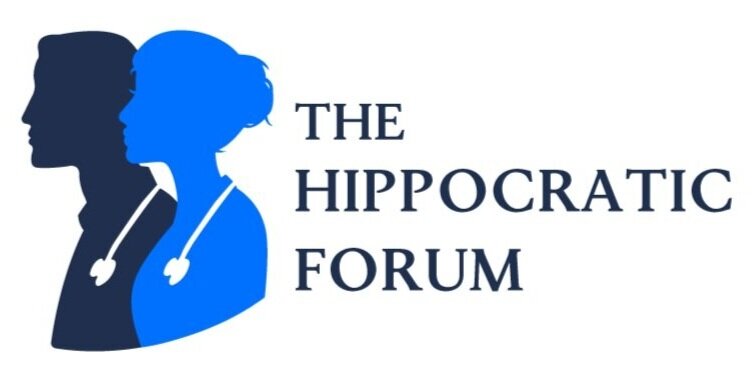The Hippocratic Vision
In the 2018 comedy, Tag, one of the main characters decides to test whether or not a physician he encounters is a “real” doctor by asking whether he can recite the Hippocratic Oath. The physician stares in annoyance and disbelief, responding, “That’s not a thing doctors memorize.”[1]
It’s meant to be a quick gag and an absurd moment, but the physician’s words are on point. Today’s doctors don’t memorize the oath. They aren’t tested on it. It’s pagan invocations, language, and prohibitions are found parochial and antiquated, and even for those who are fond of it, a quick demand that all medical trainees return to the Oath risks the sexism, elitism, and nepotism which concerned physicians and philosophers like Edmund Pellegrino decades ago.[2]
The Oath only allows for the medical training of men. It seems to favor aristocrats. It prohibits surgery and abortions. It speaks of training only those within the guild.
And yet the Oath remains—a palimpsest of old truths only partially visible beneath the surface of the new vows which modern medicine has encouraged its trainees to create in recent years, perhaps undermining the moral seriousness of the very practice of oath-taking. Nevertheless, when medical students are prompted to write their own oaths, I suspect “Hippocratic” and “oath” are still the first two words they type into Google. Indeed, the Hippocratic vision is the scaffold on which the practice of medicine continues to build its traditions. The observational model and language of the bedside—so important to William Osler’s legacy of modern medical training and practice—arose from the Hippocratic tradition.[3]
What I’ve always found most surprising about the Hippocratic posture is that it claims medicine as a moral endeavor. Under a moral vision of medicine, there are things physicians can do that are right, and some things they can do that are wrong—not just technically, procedurally, or bureaucratically “wrong”—but always and everywhere impermissible: killing patients, bribing patients, having sex with patients, etc.[4] It makes such strong claims because it was produced, in part, from an ethical minority, reminding today’s practitioners that even unfashionable moral opinions might establish new visions of practice that last for centuries.[5]
Therefore, the oath challenges contemporary paradigms that increasingly turn a blind idea to the moral nature of medicine. The Hippocratic tradition pushes back against what physician, Farr Curlin, and medical student, Jacob Blythe, have described as a “product presumption,”[6] in which today’s medicine is understood primarily as a “de-moralized” goods and services industry, in which moral standards like “oaths” are largely irrelevant to the ability of today’s medical workers to “provide”[7] their patients with whatever intervention it is the patient desires.
Far from bureaucratic aims, the Hippocratic legacy calls the medical practitioner to first “help the sick”[8] and “keep them from harm and injustice”[9]—not merely to provide a service. The Hippocratic legacy is fundamentally one of refocusing attention, particularly as our attention becomes more and more stretched, distracted, or mistuned.[10]
The Hippocratic Oath may not be a thing doctors memorize, but neither is it something easily forgotten. The Hippocratic vision is an opportunity to question today’s medical practices, not necessarily by asking what marks a “real” doctor or what is worth committing to memory, but with the unasked questions of what the practice of medicine is, what it is for, and what we who have chosen its path are called to practice.
References:
[1] Jeff Tomsic, Tag, Burbank, CA: New Line Cinema & Broken Road Productions, 2018.
[2] Edmund Pellegrino and David Thomasma, The Virtues in Medical Practice (New York, NY: Oxford University Press, 1993), 35, 47.
[3] Symposium on Medicine and the Five Senses, William F. Bynum and Roy Porter, eds. (Cambridge, England: Cambridge University Press, 2005), 2, 7–8.
[4] Brewer Eberly and Benjamin Frush, “Integrity in Action: Medical Education as a Training in Conscience,” in Perspectives in Biology and Medicine 62, no. 3 (2019): 414–33.
[5] Benjamin Frush, Brewer Eberly, and Calvin Gross, “The Hippocratic Oath and the Contemporary Medical Student,” in Academic Medicine 93, no. 5 (2018): 671.
[6] Jacob Blythe and Farr Curlin, “‘Just Do Your Job’: Technology, Bureaucracy, and the Eclipse of Conscience in Contemporary Medicine,” Theoretical Medicine and Bioethics 39, no. 6 (2018): 431–52.
[7] Pamela Hartzband and Jerome Groopman, “The New Language of Medicine,” in The New England Journal of Medicine 365, no. 15 (2011): 1372–3.
[8] Hippocrates, “The Oath,” in The Medical Works of Hippocrates, trans. John Chadwick and W. N. Mann (Oxford: Blackwell Scientific Publications, 1950), 9.
[9] Ludwig Edelstein, “The Hippocratic Oath: Text, Translation, and Interpretation,” in Ancient Medicine: Selected Paper of Ludwig Edelstein, ed. Owsei Temkin and C. Lilian Temkin, trans. C. Lilian Temkin (Baltimore, MD: The Johns Hopkins University Press, 1967), 6.
[10] Mark Kissler, Katherine Kissler, and Marisha Burden, “Toward a Medical ‘Ecology of Attention,’” The New England Journal of Medicine 384 (2021): 299-31.
Painting: Pamela Chen, "MS3," Academic Medicine.